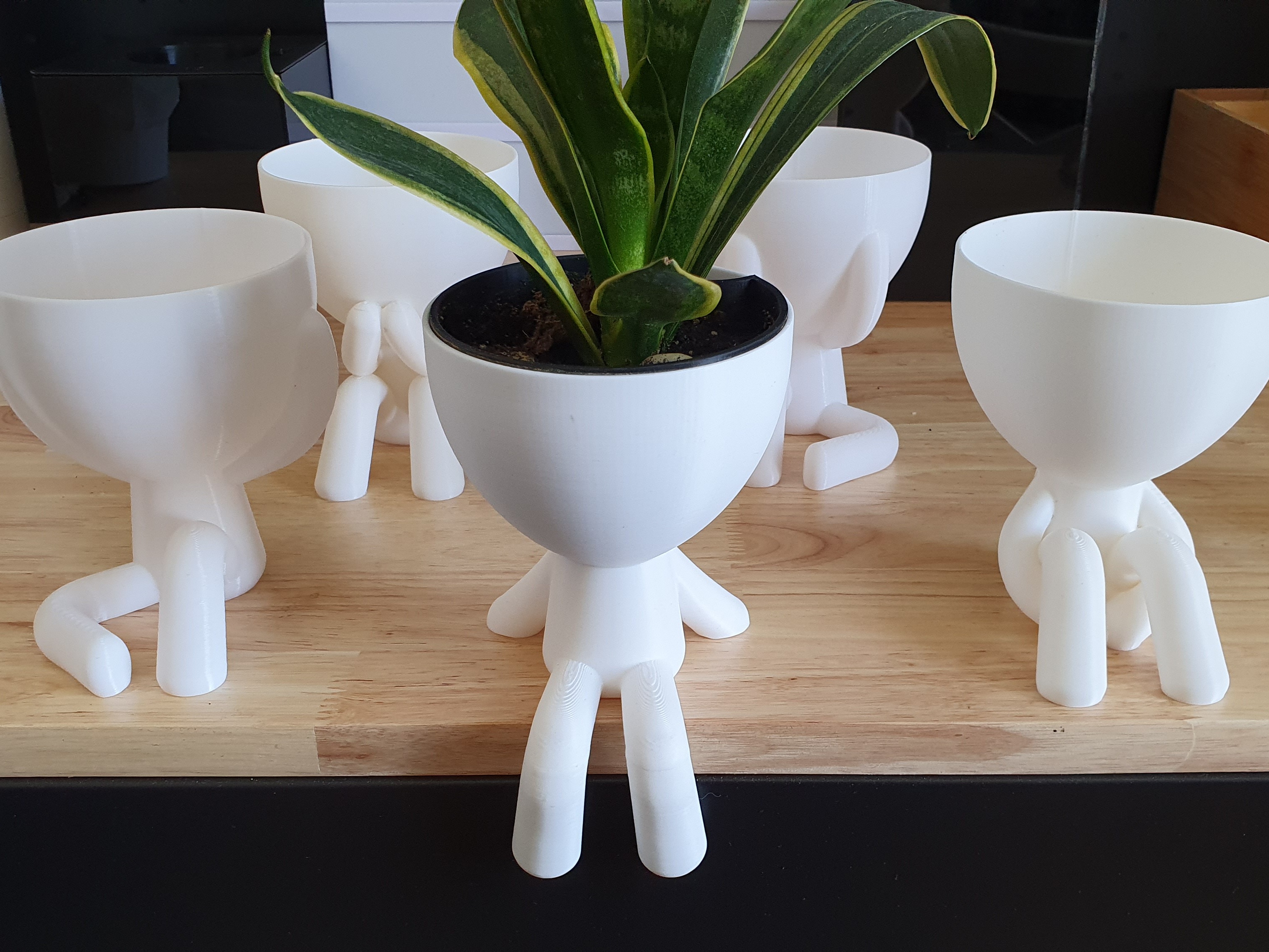
Hydroponic, Self-Watering, Seeds starter, Robert Planters
prusaprinters
<p>If you would like to commercialize these and all my models please send me an email to: <a href="mailto:elwinkjralvarado@hotmail.com">elwinkjralvarado@hotmail.com</a></p><p>For more exclusive models you can go here:</p><p>https://cults3d.com/en/users/EstudioAditivo/creations</p><figure class="image"><img src="https://media.prusaprinters.org/media/prints/63192/rich_content/b629da77-db3e-4bda-a6ff-b83cfdb43c17/image.png#%7B%22uuid%22%3A%22012b1324-7387-4153-93c1-991fe36a982d%22%2C%22w%22%3A960%2C%22h%22%3A340%7D"></figure><h4>Easy to Print, Easy to Use, Easy to Care</h4><p>If you're like me and forget to water the plants or overwater them having as a consequence the bad shape of your plants, here is one solution.</p><p>I researched which hydroponic method could be easier for beginners like me and found that the wicked and the Kratky method were the ones to follow. Then for challenging myself in the design of it, I decided to follow Kratky's method.</p><p>People say a Kratky system is a “<strong>set it and forget it</strong>” method. Plants are let to do their own things until they are bigger enough. That’s somewhat true. It is because Kratky is a<strong> completely passive system</strong>. There is no electricity used as well as no pumps and wick needed, also don’t have to change nutrients in the reservoir much often like other systems. </p><p>So theoretically, Kratky is a <strong>low-maintenance system</strong> that can work on its own for weeks (depending on the size you print the Model). </p><p>For the model of the planters, my inspiration came when I saw the popular Robert planters a long time ago, then I designed my own models as I wanted to have control of every part and the insert itself.</p><p> </p><h4><strong>Parts</strong></h4><p><strong>Vase:</strong> Inspired by the popular Robert Planters from Estudiofloga, but in poses that will be only achieved by 3D Printing.</p><p><strong>Insert: </strong>Specially designed to follow the hydroponic Krafty method, so aeration and watering are consistently given to the plant as it requires. </p><p> </p><h4>How to use it</h4><p>There's are <strong>4 ways</strong> you could use these planters, as a regular planter, as a self-watering planter, or as a hydroponic miny garden.</p><p>For a <strong>regular planter</strong>, just print the vase and use it with plants that require low water such as <strong>Cactaceae</strong> or <strong>Succulents.</strong></p><p>For <strong>self-watering</strong>, you only need to put the normal dirt in the insert and the water on the head.</p><p>For <strong>seeds starter</strong>, is the same as self-watering but put a plastic glass on the top after you put the seed, the seed will germinate as the planter will keep it moistured, when germinated just take off the glass and <strong>let it grow, </strong>no need to transplant it, just set it and forget it<strong>.</strong></p><p> </p><figure class="image"><img src="https://media.prusaprinters.org/media/prints/63192/rich_content/3692d26f-66d4-4164-a374-8873a038a71e/image.png#%7B%22uuid%22%3A%225abca5a8-2c3a-4761-8abc-c99b0e845a20%22%2C%22w%22%3A1557%2C%22h%22%3A920%7D"></figure><figure class="image"><img src="https://media.prusaprinters.org/media/prints/63192/rich_content/b45c3636-a277-4b77-80df-c2998fe593ec/image.png#%7B%22uuid%22%3A%22b0defea4-a54c-43f7-ba26-08d2e5e3de03%22%2C%22w%22%3A1236%2C%22h%22%3A923%7D"></figure><p>For a <strong>hydroponic mini garden</strong>, you need to replace the dirt with a <strong>Growing medium</strong>. I prefer a mix of 50% cocohusk and 50% perlite as it is easy to work with, pH neutral, and have good aeration. Also, you have to add Nutrients to the water before pouring it into the head of the planter. Again just set it and forget it :)</p><p> </p><h3>How does the Kratky method work?</h3><figure class="image"><img src="https://www.trees.com/wp-content/uploads/files/inline-images/The-Kratky-method-system.png" alt="The Kratky method"></figure><p>The insert has holes in the top for the roots to have enough oxygen and can grow healthy. Plant roots are partly submerged into the water and some roots will go for the upper holes and exposed to the air.</p><figure class="image"><img src="https://media.prusaprinters.org/media/prints/63192/rich_content/5a319e35-f98e-451a-8ec9-877551faa0ce/image.png#%7B%22uuid%22%3A%22c7371620-0dc0-4429-87d2-fefbb0608146%22%2C%22w%22%3A824%2C%22h%22%3A718%7D"></figure><p>The bottom part of the insert is for the roots to grow and absorb as much water (with nutrients) as they could need. As the plants grow, the water level will decline as plants absorb the water in the system, leaving a gap of the roots exposing to the air. The “air gap” is essential because it is where the plants respire.</p><p>So that means at times, plants are still able to take up sufficient nutrients, water, and oxygen.</p><h4>Printing Tips</h4><p>Use a layer height of <strong>0.16 (THIS IS IMPORTANT)</strong>, plus <strong>5 bottom and top layers</strong> you won't need any supports in Vase_01, Vase_02, Vase 04, Vase_05, and the Insert, Vase_03, and Vase_06 require just a bit of supports at 60 degrees.</p><p>I recommend at least <strong>3 line walls</strong> plus <strong>polyurethane paint</strong> for the watertight finishing.</p><h4><strong>License</strong></h4><p>These models are for personal use, if you would like to sell them on Etsy or another marketplace please send me a message or go to my Patreon page for more info.</p>
With this file you will be able to print Hydroponic, Self-Watering, Seeds starter, Robert Planters with your 3D printer. Click on the button and save the file on your computer to work, edit or customize your design. You can also find more 3D designs for printers on Hydroponic, Self-Watering, Seeds starter, Robert Planters.
